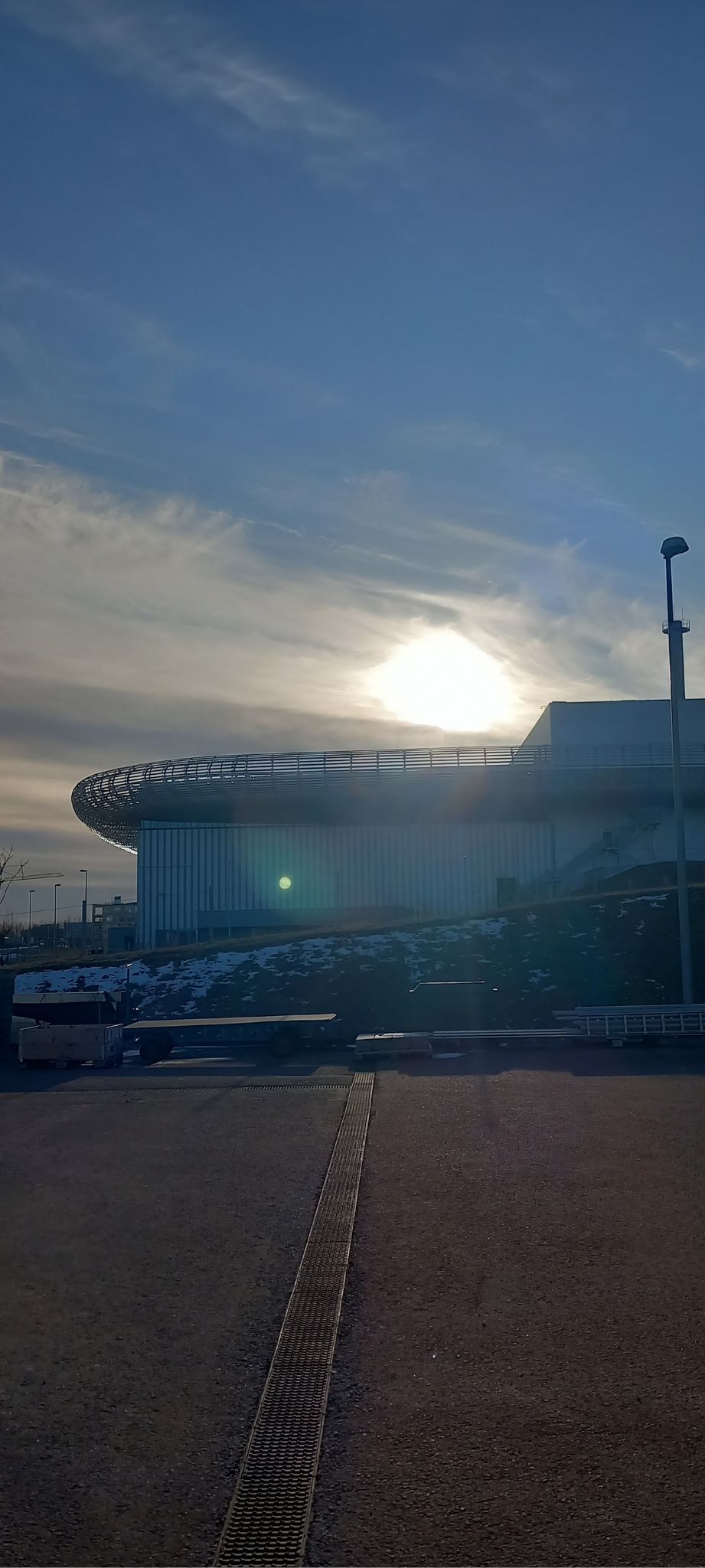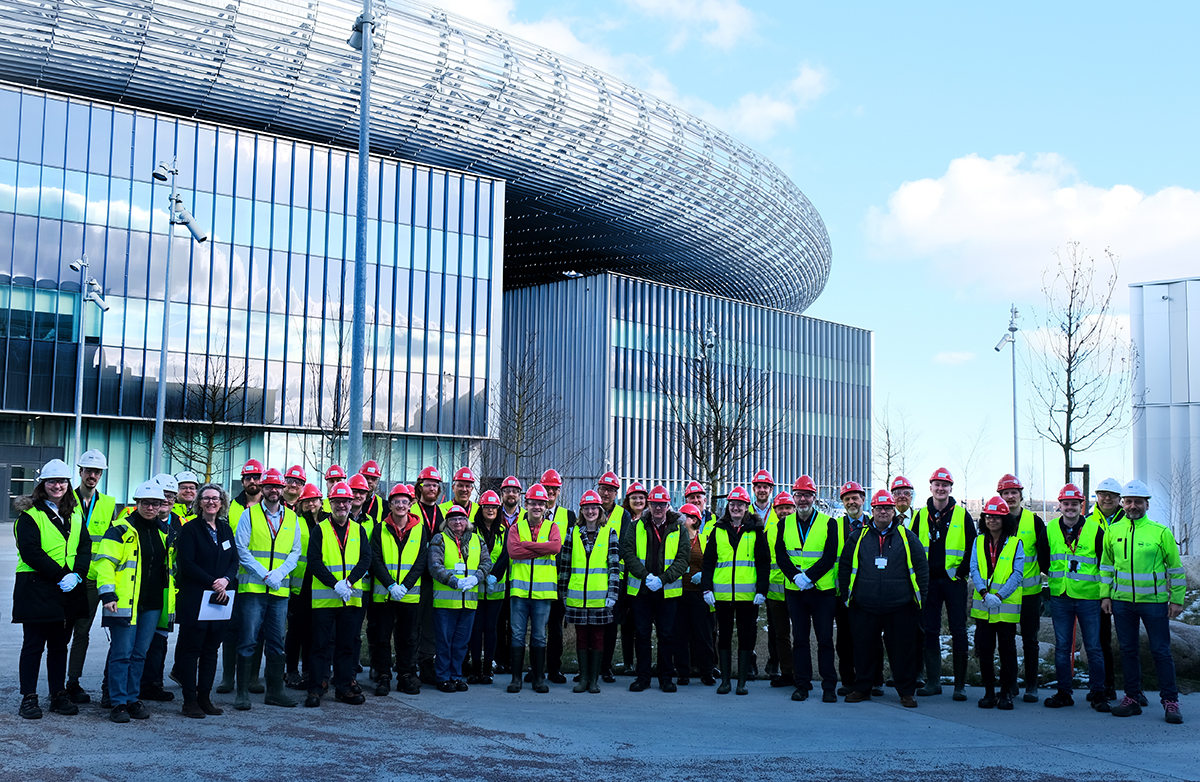
10 years on from the initial agreement from the UK to fund 10% of The European Spallation Source (ESS), a group of UK contributors flew out to Sweden to take part in the UK-ESS seminar.
This was a celebration of our in-kind contributions to the currently-under-construction neutron facility. It also allowed contributors to see the whole picture of what their work is going towards. Hopping from plane to train to tram we gathered at the facility on Thursday ready for a packed afternoon!
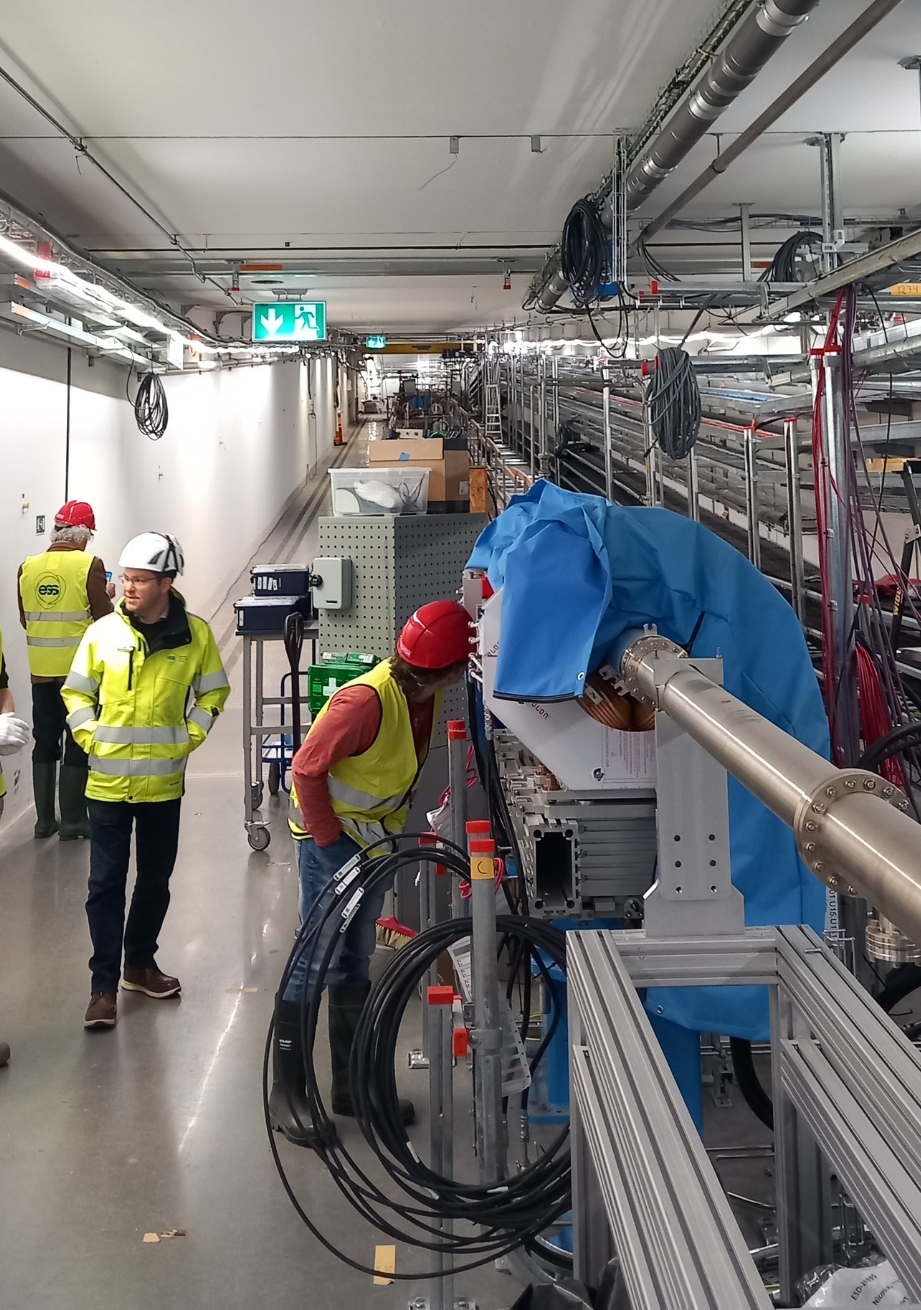
After picking up our site passes, we were guided to the atrium for where Justin Greenhalgh (Senior Programme Manager) kicked off our talks with a short intro into neutron research. With visitors from across the UK in fields from radioactive materials, finance and engineering, the introductions successfully covered all grounds to allow everyone to get the most out of the talks.
Soon after, we were suited and booted for a site visit! Seeing inside this fellow neutron facility as it is being built was like a behind the scenes tour, allowing access to all the areas that will one day be too radioactive for human entry. It gave the wonderful opportunity for people to see their very own contributions in place ready to go. With many cries of “I made that!” it was an excellent atmosphere all round to celebrate this amazing collaborative project.
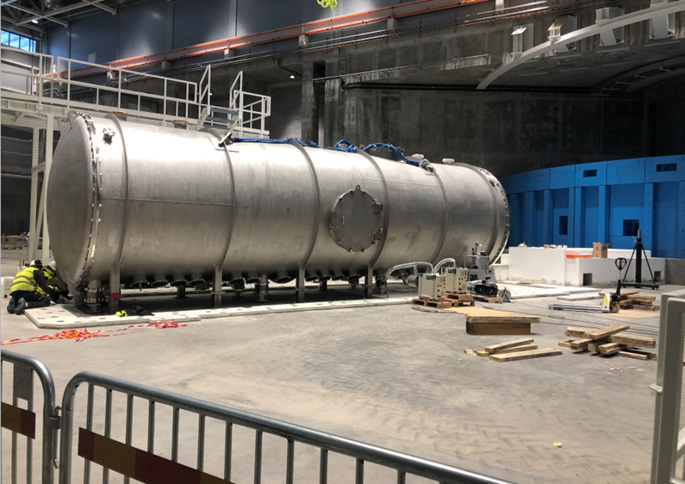
The main attraction for many of our ISIS staff was the Loki beamline, for which ISIS is the lead partner in the design and construction (photo right)! The first instrument in place, it was with great pride that our group got to see it in position 800 miles away from where they had designed and built it.
We also had the chance to look inside the linear accelerator, which will speed up the protons ready for collision with the target. The “Daresbury Laboratory STFC” plaques proudly stand on each quadrupole magnet along the 600m tunnel, an impressive spectacle of STFC input. These were being tested as we walked through the tunnel allowing true collaboration and discussion between experts from across Europe.
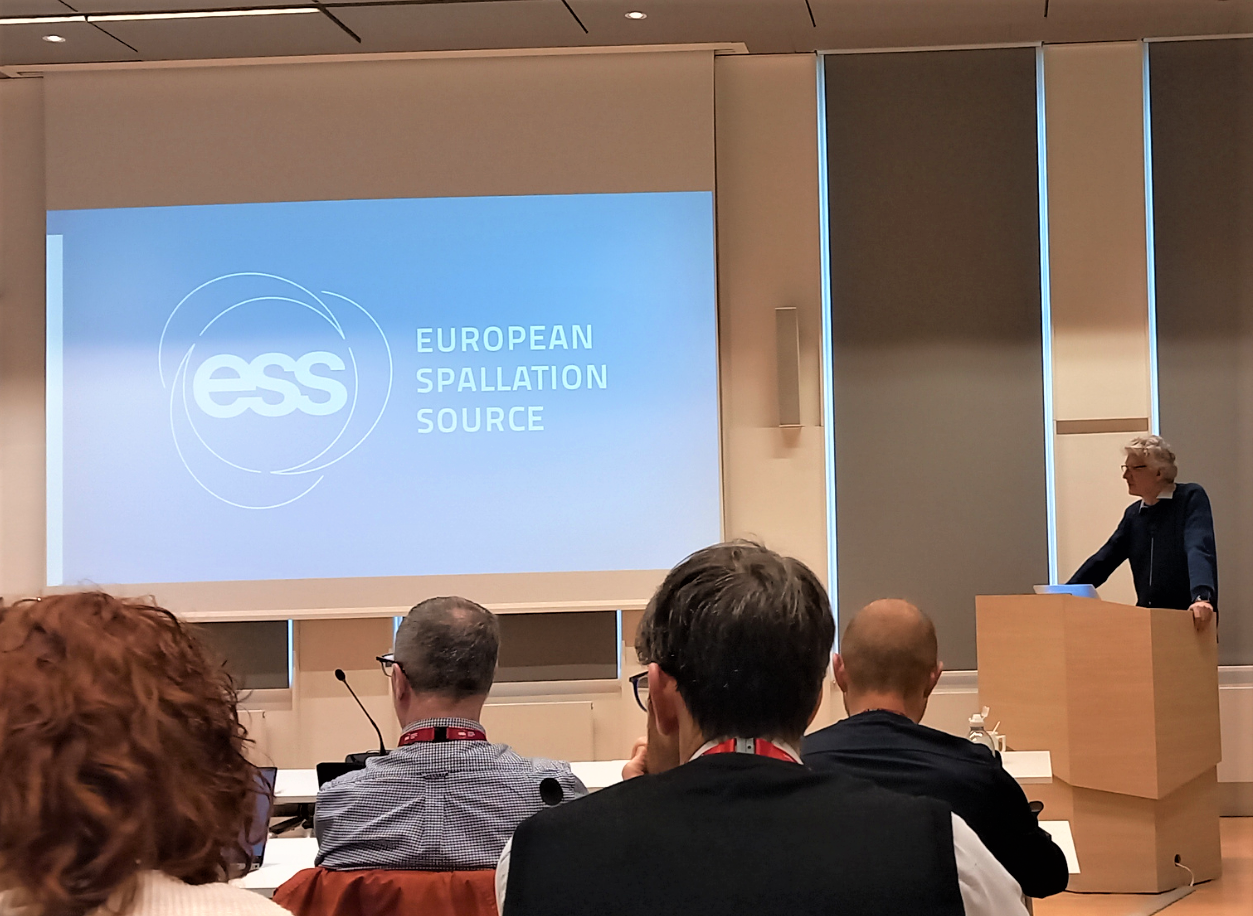
After the long walk through the facility, surrounded by snowy countryside, we had time for a quick coffee before the real talks began! Such as “What can we do with neutrons?”… Did you know it hasn’t even been 100 years since the neutron was discovered!? In this phenomenal amount of time, we have already built facilities such as ISIS and the ILL, which already perform incredible neutron experiments to improve agriculture, batteries, medicines and many more areas of science. The global collaboration on the ESS will allow this new facility to use our collective knowledge to further enhance this field of research.
After a well-earned rest and a breakfast of pastries, the next day brought talks from our very own UK contributors. Professor Helmut Schober (director of ESS), even got in on the action, giving us an overview of the full facility, telling us his top picks of why neutron science is “more exciting than any football match, even in the premier league” and why collaborations are absolutely fundamental for ESS.

Following on from this strong start to the morning, ISIS representative Simon Cooper kept us engaged with his mechatronic works on the UK instrument projects Freia and Loki. Detailing how we need the instruments to be adaptable to different sample environments, sizes and other constraints, all while utilising the beam flow because “scientists may sleep, but neutrons don’t”! Joel Hodder then swiftly jumped in with his talk on instrument shielding to protect users and staff alike from radiation with his innovative methods that seem to get him pretty messy.
Paul Aden and Luke Balden brought us the progress from Daresbury Lab, coving 85% of the 500-metre accelerator, all the way from its design to being 99.8% complete! There were also talks from non-STFC contributors such as RACE (Remote Applications in Challenging Environments) on how the ESS will deal with radioactive waste without human harm.
The atmosphere was full of enthusiasm for more collaboration and the success of the UK part of the project so far! After much discussion and a delicious meal, our seminar was over, and everyone rushed off to catch flights having gained contacts, collaborative ideas and inspirations to fuel future developments.
We are excited to see the progress of ESS and its in-kind collaborations and are greatly looking forward to their beam on target milestone in 2025!
.png)
.png)
